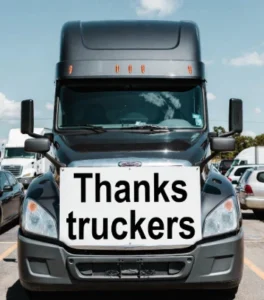With $8.8 million in funding, the automated platooning project aims to deploy various levels of automation and integrate these technologies into the daily freight operations of truck fleets.
A month ago, a project by EASE Logistics in collaboration with Kratos Defense was launched. It involved two tractor-trailers equipped with automated platooning technology traveling along Interstate 70, between Columbus, Ohio, and Indianapolis, Indiana. These platforms are part of an innovative pilot program that could transform the freight transportation sector in the United States.
This logistics innovation is a joint effort between DriveOhio, an initiative of the Ohio Department of Transportation, and the Indiana Department of Transportation (INDOT). The goal is to advance the adoption of truck automation technologies within the road freight industry, potentially reshaping logistics across the entire Midwest.
With $8.8 million in funding, the automated platooning project aims to deploy various levels of automation and integrate these technologies into the daily freight operations of truck fleets. But what exactly is truck platooning?

What is truck platooning?
Kratos Defense is a company specialized in military autonomous systems. For this project, Kratos adapted its technology for civilian use in a truck platooning pilot in Ohio and Indiana, in collaboration with EASE Logistics. The result was a system in which a lead truck is closely followed by another, coordinated through a direct and secure vehicle-to-vehicle connection—without relying on Wi-Fi, cellular networks, or Bluetooth. It uses dual-channel frequency-hopping communications (915 MHz and 2.4 GHz) with 256-bit encryption, ensuring reliability even in interference-prone areas such as electronic toll booths.
Project leaders emphasize that the system is not designed to replace drivers, but to extend their capabilities and enable more efficient operations. During pilot tests, the following truck includes a backup driver, though the ultimate goal is to eliminate the need for one. In the meantime, both drivers can alternate roles to help reduce fatigue.
According to information shared by IEEE Spectrum, the benefits of platooning include improved safety—since it helps smooth traffic shockwaves—as well as fuel savings, with up to 10% for the following truck and a slight improvement for the lead truck due to reduced turbulence.

The evolution of truck platooning
The technology known as platooning is not entirely new. Driven by companies such as Peloton Technology, Daimler Trucks, and Volvo Group, platooning emerged about 15 years ago as an early step toward autonomous freight transport. In its initial stages, it required drivers in every truck but aimed to reduce fuel consumption through the aerodynamic benefits of close convoy driving. Later versions introduced follower trucks without drivers.
Companies like Otto, TuSimple, Aurora, Embark, and Waymo pushed forward the development of fully autonomous trucks about a decade ago. These offered greater efficiency and lower operating costs, attracting more investment than platooning technology.
Although platooning has faced challenges in scaling up, it can coexist with individual autonomy. On routes with heavy truck traffic, platooning technology remains valuable for saving fuel. Additionally, new use cases have emerged, such as agricultural and mining operations, and countries like China are advancing in this area with companies such as KargoBot and Pony.ai.

Advantages and disadvantages of platooning
A study by the U.S. Department of Energy estimates that nationwide spontaneous platooning—where trucks automatically pair up while en route—could save up to $1 billion annually in fuel and avoid $4.8 billion in infrastructure expansion costs by increasing road capacity by 8%. This technology could boost capacity even further, as it allows extremely short following distances that human drivers cannot safely maintain, thereby optimizing space usage and operational efficiency.
In the Ohio-Indiana pilot project, the trucks operate at a distance of up to 30 meters, with the potential to reduce that to just 4 meters under controlled conditions. Kratos Defense’s system is resistant to interference, does not rely on external networks, and can be retrofitted to existing trucks, making it attractive to current fleets.
However, pavement wear due to the close proximity of trucks and challenges in urban environments—such as traffic lights or light vehicles cutting into the platoon—remain significant issues. Furthermore, while the system reduces cognitive load, the following truck’s driver must still remain alert.
Kratos states that platooning represents a practical step toward a safer, more efficient, and smarter freight transportation network. As a result, the Departments of Transportation in Ohio and Indiana plan to issue requests for proposals this summer to deploy automated trucks equipped with SAE Level 2 and Level 4 technologies.

The strangest Black Friday purchases: from funny to nothing
Fueled by the adrenaline of the moment and the excitement of scoring big discounts, many shoppers have ended up buying unusual items during Black Friday.

Young drivers wanted, older drivers needed: the industry’s biggest dilemma
The road transportation industry remains at a crossroads in its efforts to recruit young drivers, but the workforce keeps aging and seeking retirement. The road

Thanksgiving, Black Friday and the Long Weekend: America Moves Because Trucks Never Stop
Thanksgiving, Black Friday and the Long Weekend: America Moves Because Trucks Never Stop

Thankful for the Drivers Who Keep America Moving This Thanksgiving
Thankful for the Drivers Who Keep America Moving: The Invisible Work Behind One of the Busiest Thanksgiving Seasons

Preparing for Thanksgiving travel: best and worst times to travel
Whether you are a truck driver, a traveler, or simply someone who needs to move around during these days, we share essential information to help

Cargo theft spikes during Thanksgiving: how to stay safe
Every year during Thanksgiving, cargo theft poses a serious threat to the trucking industry, and this year will be no exception. Every year during Thanksgiving,
